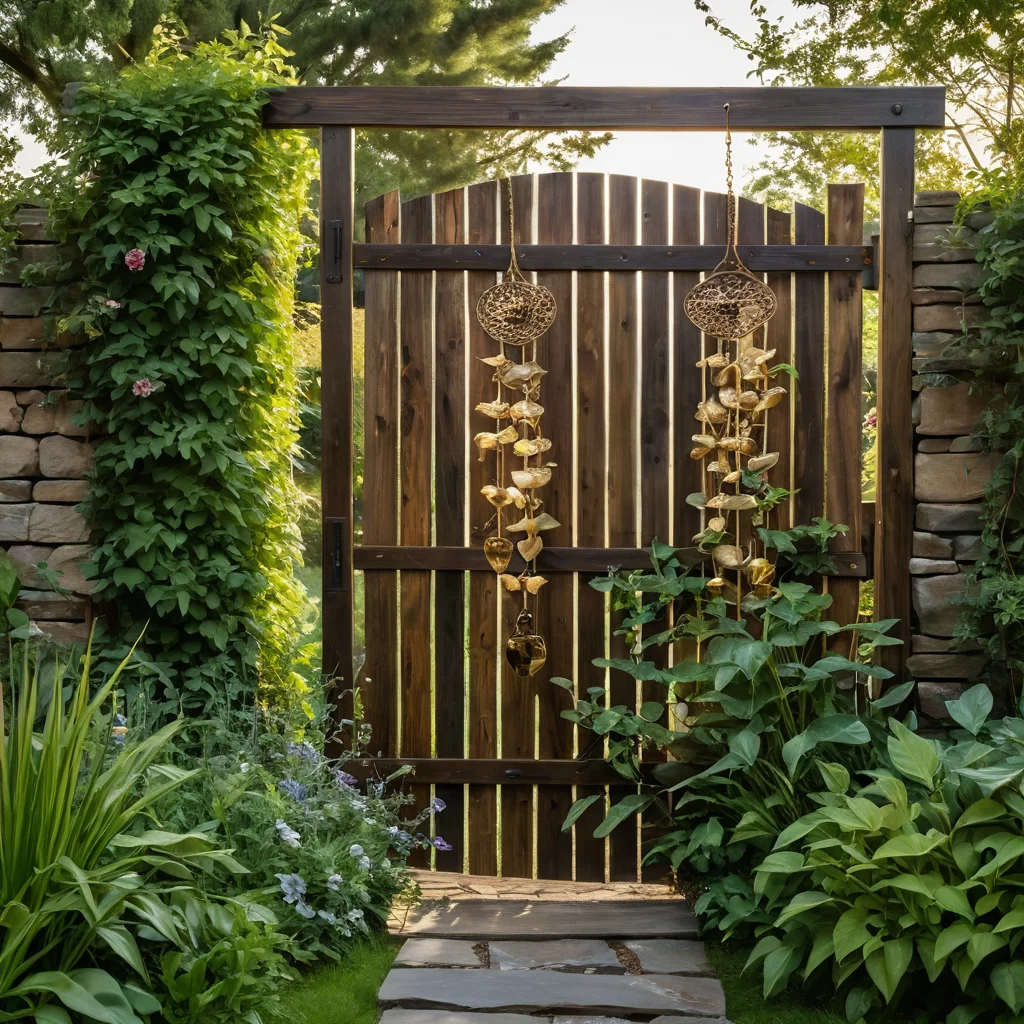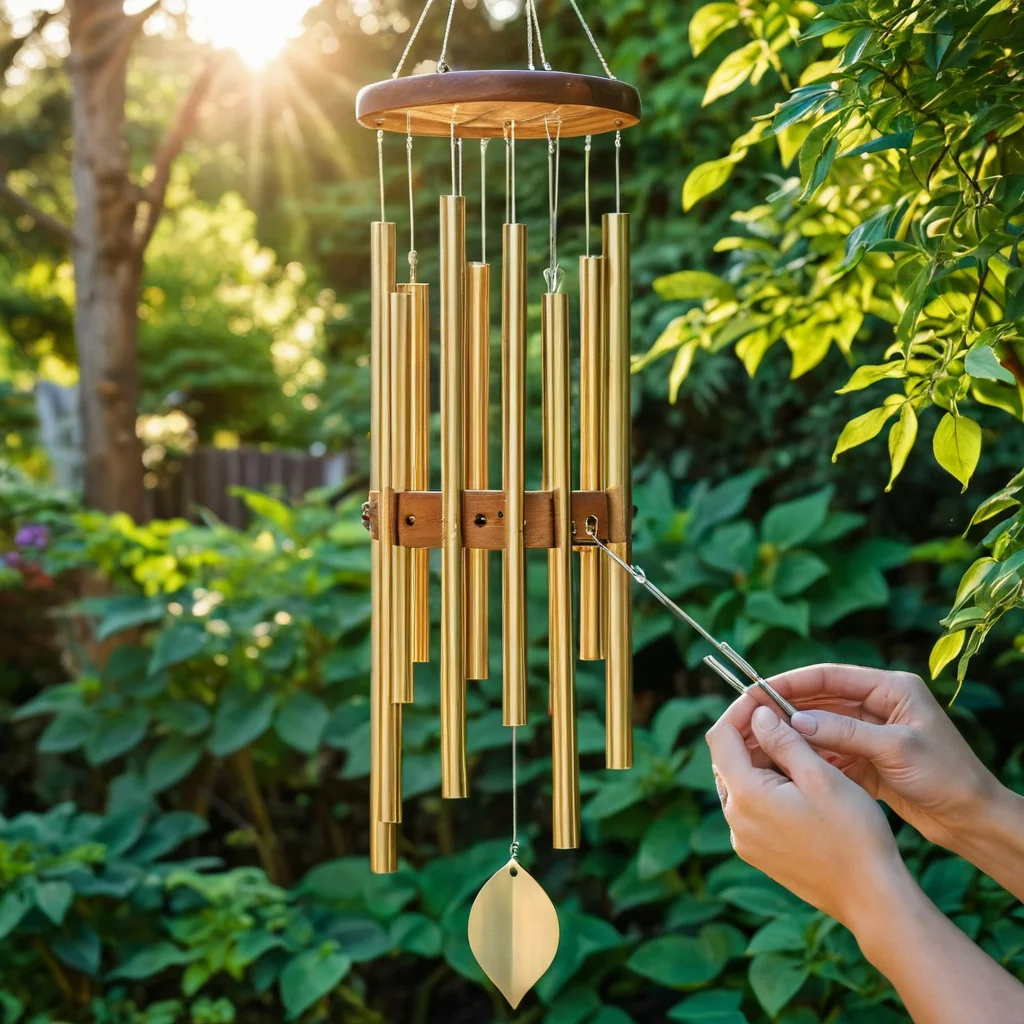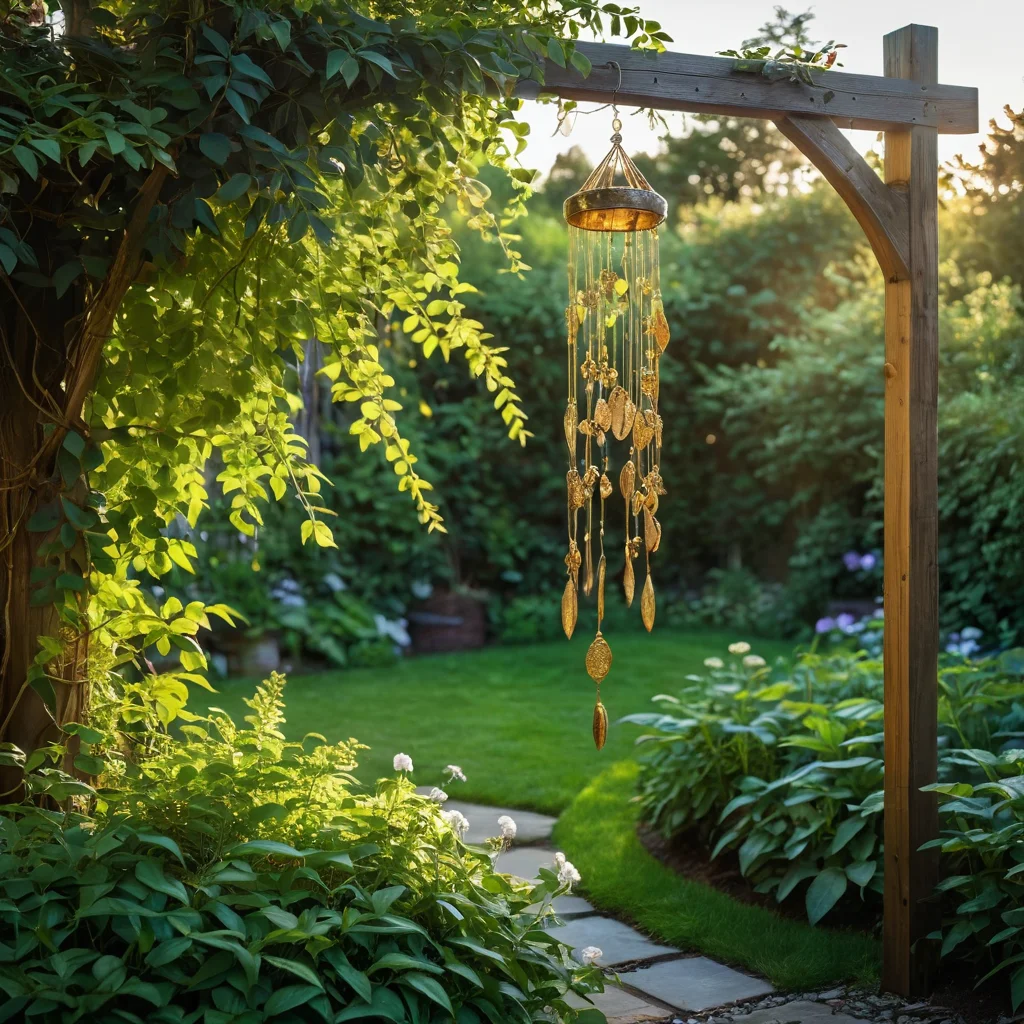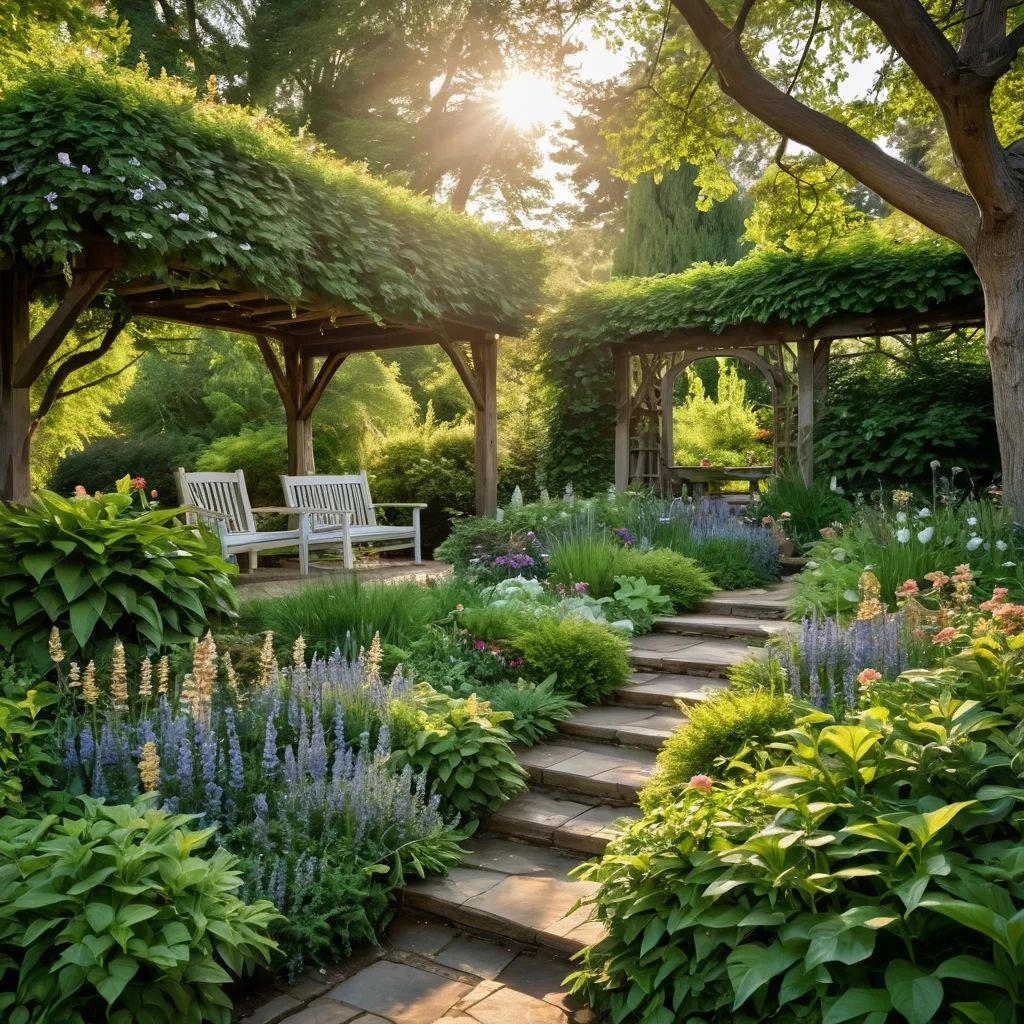Listen closely. Can you hear it? It’s not just the rustling of leaves or the singing of birds, though they are beautiful too. It’s a quiet, barely perceptible chime that can emanate from your very own fence. A fence that not only marks boundaries but also fills your garden with melodies, creating a special atmosphere of peace and coziness. This is exactly the kind of fence we will be creating today – a true sound fence that will become not only a functional element but also a source of inspiration.
Why You Need a Sound Fence: Creating an Atmosphere of Coziness and Quiet on Your Property
We all dream of our own corner of tranquility, where we can escape the city bustle and enjoy the singing of birds and the rustling of leaves. Often, the main source of noise at a dacha isn’t just nature, but also neighbors, or a passing road. And here, our trusty friend – the fence – comes to the rescue. But what if we go beyond the usual understanding and make it not just a solid wall, but an instrument that can bring harmony to our garden? A sound fence is not just a trendy fad; it’s a thoughtful solution for creating a unique atmosphere.
So, why do we need such an unusual fence?
- Creating Acoustic Comfort: Properly selected elements can not only produce pleasant sounds but also partially absorb or scatter unwanted noise from the street or neighbors. It’s like creating your own “sound bubble” of coziness.
- Aesthetic Pleasure: Melodious chimes, the play of wind in hanging ornaments, gentle rustling – all this adds a special charm to the garden and makes it truly alive. Your garden will not just be a picture but a true work of art that you can listen to.
- Connection with Nature: A sound fence helps you better feel the rhythms of nature. It reacts to the slightest breeze, to changes in weather, becoming a kind of indicator of the environment.
- Individuality and Creativity: Creating such a fence is a wonderful opportunity to express your individuality and bring your boldest ideas to life. You can make it unique, reflecting your character and taste.
- Children and Animals: Pleasant sounds can calm children, and unusual melodies can distract pets from unwanted behavior, such as barking at passersby.
Believe my experience, even the simplest elements, like small bells or hanging ornaments, can radically change the perception of your property. It’s like adding the final touch to a painting that brings it to life and fills it with meaning.
Types of Sound Fences: From Classic Melodies to Modern Installations

The world of sound fences is incredibly diverse. You can go the classic route, creating light and unobtrusive melodies, or immerse yourself in the world of modern sound installations. The main thing is that the sound pleases you and harmoniously fits into the overall landscape of your property.
Let’s look at the main directions:
- Classic Wind Chimes (Music of the Wind): This is perhaps the most common and accessible option. Such chimes come in various sizes, shapes, and materials. From elegant Chinese ones with a delicate, shimmering sound to more massive and lower-pitched ones, resembling the sound of a tuning fork. They are perfect for creating a calm, meditative atmosphere. I always advise starting with them if you are just exploring the idea of a sound fence.
- Sound Panels and Screens: These are more complex structures where sound-producing elements are integrated into the fence itself or create a separate decorative panel. These can be metal plates of different lengths, hung so that they chime when they touch, or wooden elements that produce a light rustling sound when the air moves.
- Sound-Producing Plants: Yes, even plants can create a sound background! Tall grasses, such as miscanthus or pampas grass, rustle their inflorescences in the wind, creating a pleasant noise effect. Some types of bamboo also produce a light tapping sound when their stems move. This is the most natural and harmonious way to “soundtrack” your fence.
- Interactive Installations: This is a more avant-garde approach. You can create elements that react to movement, touch, or even sunlight. For example, small wind turbines connected to musical elements, or moving sculptures that produce sounds with the slightest air movement.
- Combined Options: Most often, the best effect is achieved by combining different elements. For example, wind chimes hung next to a hedge of grasses create a layered and volumetric sound.
Don’t be afraid to experiment! The main thing is to listen to your feelings and choose what brings you joy.
Materials for Creating a Sound Fence: Choosing Wood, Metal, Stone, and Plants

The choice of materials is half the battle when creating a sound fence. The character of the sound, the durability of your installation, and its appearance will depend on the elements you use.
Here are the main materials worth considering:
- Metal: This is perhaps the most popular material for creating melodious sounds.
- Copper and Brass Tubes: Classic wind chimes are made from these. They produce a clear, resonant, and durable sound.
- Aluminum: A lightweight and inexpensive material, but its sound is less expressive.
- Steel (stainless or galvanized): Can produce lower and deeper sounds, especially if plates or rods of different thicknesses are used.
- Old Keys, Spoons, Forks, Nails: This is a great option for creating budget-friendly and unique decor. Old metal items, hung on ropes or fishing lines, can produce very interesting sounds.
- Wood: Wood gives the sound a softer, warmer, and more natural tone.
- Bamboo: Its hollow stems produce a pleasant, muffled tapping sound in the wind. Ideal for creating a more natural sound.
- Wooden Blocks or Sticks: Hung at different heights, they can create a gentle rustling or a dull chime.
- Driftwood and Branches: Use them as a base for hanging other elements or as standalone features.
- Glass:
- Glass Beads, Balls, Shards: When they touch, they produce a thin, crystal-like chime. It’s important to choose thick, durable glass to avoid breakage.
- Old Bottles: They can be used as decorative elements and can also produce sound in the wind, especially if hung.
- Stone:
- Pebbles, Gravel: When they shift or touch, they create a soft, rustling sound.
- Flat Stones: Hung on ropes, they can produce a dull, low sound.
- Plants:
- Tall Grasses: Miscanthus, pampas grass, sedge. Their dry inflorescences and stems react beautifully to the wind.
- Bamboo: As an ornamental plant, it is also a source of sound.
- Dried Flowers: Large dried flower heads can also produce a light rustling sound.
- Ceramics and Porcelain:
- Old Cups, Saucers, Bells: Ceramic items often produce a softer, more melodious sound than metal.
Remember that combining different materials can create a very interesting and multifaceted sound effect. I, for example, love using old copper pipes in combination with large wooden beads – it’s both melodic and cozy.
Choosing a Location for Your Sound Fence: Considering Wind Rose and Acoustic Properties

Proper placement of your sound fence is key to its effectiveness and harmonious sound. It’s not enough to just hang a bell anywhere. Several important factors need to be considered to enjoy pleasant melodies, not irritating noise.
Here are the main points to pay attention to:
- Wind Rose: This is perhaps the most important factor. Determine which direction the prevailing winds come from on your property. If your fence is positioned so that the wind blows directly into it, you will get maximum sound effects. You can observe the smoke from a bonfire, a flag, or simply the movement of leaves on trees throughout the day and different seasons.
- Sound Direction: Think about where the sound will be directed. If you want to enjoy melodies while sitting on the terrace, position the fence so that the sound goes there. If your goal is to muffle street noise, place the fence closer to the noise source, but in a way that it blocks unwanted sounds rather than amplifying them.
- Acoustic Properties of the Property: Your garden is not a flat space. Hills, buildings, dense plantings of trees and shrubs – all affect sound propagation. In open spaces, sound will travel further and be brighter. In more enclosed areas, it will be muffled. Try experimenting: walk around the property, making sounds, to understand where they sound best.
- Sound Intensity: Don’t place too many loud elements in one place, especially near the house or relaxation area. This can create acoustic discomfort. It’s better to distribute sound elements along the entire perimeter of the fence or in several zones.
- Protection from Weather: If you are using fragile elements (glass, thin metal), make sure they are not constantly exposed to strong winds or impacts. You may need to provide protection for the most vulnerable parts.
- Neighborliness: Consider your neighbors. While pleasant chimes are great, excessively loud or intrusive sounds can annoy them. Try to find a balance.
I, for example, always advise starting with a small experiment. Hang a few simple bells on a tree branch or bush and listen to how they sound in different parts of the garden. This will help you better understand the acoustic characteristics of your property.
Step-by-Step Guide: Assembling the Simplest Wind Chime for Your Fence

Creating your own wind chime is an engaging process that is accessible even to beginners. You won’t need special tools or expensive materials. The main thing is the desire to create and a little free time.
Here’s what we’ll need:
- Base: This can be a small wooden block, a beautiful piece of driftwood, a sturdy ring (metal or plastic), or even an old frying pan without a handle.
- Chiming Elements:
- Copper or brass tubes of different lengths (the longer the tube, the lower the sound).
- Metal spoons, keys, old coins.
- Large glass beads or balls.
- Ceramic or porcelain elements (e.g., small cups).
- Hangers:
- Strong fishing line or thin rope.
- Thin wire.
- Central Element (Wind Catcher): This can be a flat wooden or metal disc, or another hanging element that will move in the wind and strike the chiming elements.
- Tools:
- Scissors or cutters for cutting fishing line/rope/wire.
- Drill or awl for making holes (if necessary).
- Glue (e.g., epoxy) for securing elements if they are not hung.
Step 1: Prepare the Base
If you are using a wooden block, sand it smooth. If desired, you can cover it with varnish or paint. Drill several holes in the base to hang the chiming elements and the central wind catcher.
Step 2: Prepare the Chiming Elements
If you are using metal tubes, make sure they have holes for hanging. If not, carefully drill them. If you are using spoons or keys, you can drill holes or use wire to tie them on.
Step 3: Assemble the Hangers
Cut the fishing line or rope into lengths of the desired size. Secure one or more chiming elements to each length. It’s best to make hangers of different lengths so that the elements are at different heights and don’t constantly hit each other.
Step 4: Attach the Wind Catcher
Attach the central element to a separate, longer rope or wire. It should hang freely and be able to move in the wind.
Step 5: Assemble the Entire Structure
Tie all the hangers with chiming elements to the base. Then attach the wind catcher so that it can easily come into contact with the chiming elements but doesn’t get stuck between them. Make sure all elements swing freely.
Step 6: Hang It Up
Find a suitable spot on the fence, canopy, or tree branch and securely attach your new musical chime. Believe me, you’ll be pleased with the result!
Creating Original Elements: Ideas for DIY Decorative Sound Installations

Once you’ve mastered the basics, you’ll want something more original. Your garden is your playground for creativity! Here are a few ideas to help you create truly unique sound installations:
- “Forest” of Old Keys: Collect a collection of old, unused keys. Drill a hole in each and hang them at different heights on a sturdy rope or fishing line. You’ll get a resonant and atmospheric structure reminiscent of an ancient castle.
- Melodious Bottles: Find glass bottles of different sizes and shapes. Hang them at different heights. In the wind, they will produce a pleasant, muffled chime. You can use colored bottles for extra decoration.
- “Music” from Kitchenware: Old metal spoons, forks, colanders, lids – all of these can become part of your sound installation. Create unusual mobiles from them, hanging them at different heights and angles.
- Ceramic “Icicles”: If you have old ceramic pots or vases that are cracked, don’t rush to throw them away. You can use their shards or whole small pots, hanging them so that they produce a dull, melodious tapping sound.
- Bamboo “Bells”: Cut bamboo stems into segments of different lengths. Gather them into bundles or hang them individually. In the wind, they will produce a characteristic, soft tapping sound.
- Pebble “Cascade”: Create several tiers of smooth stones or pebbles, hanging them on ropes. When the wind moves them, the stones will touch, creating a pleasant rustling sound.
- Integrated Elements: You don’t have to create separate hanging elements. You can embed sound elements directly into the fence structure. For example, drill holes in wooden planks and insert metal tubes or beads into them.
- Living Installations: Use plants that are inherently sources of sound. Tall grasses, bamboo, ornamental grasses – they will not only create pleasant rustling but also decorate your fence.
The most important thing is not to be afraid to use unconventional solutions. Sometimes the most unexpected items can create the most beautiful melody. I always say: your garden is your stage, and the sound fence is your orchestra!
Sound Fence Maintenance: How to Extend the Life of Melodious Elements

All beauty requires care, and a sound fence is no exception. To ensure your melodious elements serve you for a long time and delight you with their sound, they need minimal care. Don’t be intimidated – these are simple procedures that won’t take much time.
Here are some basic recommendations:
- Regular Cleaning: Over time, dust, cobwebs, and bird droppings can accumulate on hanging elements. Gently clean them with a soft brush or a damp cloth. This will not only improve their appearance but also prevent potential corrosion.
- Check Fastenings: Periodically inspect the ropes, fishing lines, and wires on which the elements are hung. Make sure they are not frayed, torn, or insecurely fastened. Replace worn-out elements if necessary.
- Lubrication (for metal parts): If you are using metal parts that rub against each other (e.g., parts of wind chimes), you can lightly lubricate them with silicone spray or WD-40 once a season or as needed. This will help prevent squeaking and extend their lifespan.
- Moisture Protection: It’s advisable to periodically treat wooden elements with protective compounds (oil, varnish) to prevent them from rotting or cracking due to moisture and sun. Metal elements, if not made of stainless steel, can be coated with anti-corrosion agents.
- Winter Care: In regions with harsh winters, especially if you are using fragile or corrosion-prone elements, it’s best to remove sound installations for the winter and store them in a dry place. This will help prevent damage from frost, snow, and ice.
- Plant Care: If you are using live plants as sound elements, care for them as usual: water, fertilize, prune. Make sure they don’t dry out or get sick.
- Sound Control: Sometimes, due to wind or rain, elements can start to chime too loudly or unpleasantly. Simply adjust their position or temporarily remove the most “noisy” ones.
Believe me, minimal care will allow your sound fence to delight you with its melodies for many years. It’s like caring for a beloved instrument – it responds in kind!
Common Mistakes When Creating a Sound Fence: What Beginners Should Avoid

Even in something as seemingly simple as creating a sound fence, you can make mistakes that will nullify all your efforts. So that you can immediately enjoy pleasant melodies, I have compiled a list of the most common blunders to avoid:
- Too Much Noise: One of the main mistakes is the desire to “soundtrack” every inch of the fence. An excessive number of chiming elements, especially if they are loud, can turn your garden into a source of constant irritating noise rather than coziness. Start small, gradually adding new elements.
- Incorrect Material Choice: Using non-durable or fragile materials that quickly break under the influence of wind, rain, or sun. For example, thin plastic that cracks in frost, or overly fragile glass.
- Ignoring the Wind Rose: Placing sound elements in a place where there is practically no wind, or conversely, where they are constantly exposed to hurricane-force gusts that can break them.
- Insufficient Fastener Strength: Weak ropes, unreliable knots, poor fixation – all of this can lead to your sound fence simply falling apart at the first strong gust of wind.
- Ignoring Neighbors: Creating excessively loud or intrusive sounds that can disturb your neighbors. Remember that a dacha is a place for relaxation not only for you but also for those around you.
- Lack of Aesthetics: When sound elements do not harmonize with each other or with the overall style of your garden. This can look awkward and disharmonious. Try to choose elements that complement each other and your landscape design.
- Forgetting About Maintenance: Leaving the installation unattended for many years, resulting in it falling into disrepair, rusting, and breaking. Regular inspection and minimal maintenance are the keys to longevity.
- Overly Complex Designs for Beginners: Trying to create a complex, multi-level installation right away without experience. This can lead to disappointment. Start with simple, proven solutions.
Creating a sound fence is a wonderful opportunity to bring more harmony and creativity into your life. The main thing is to approach this process with heart, considering all the nuances, and then your garden will surely sound anew, filled with pleasant melodies.
